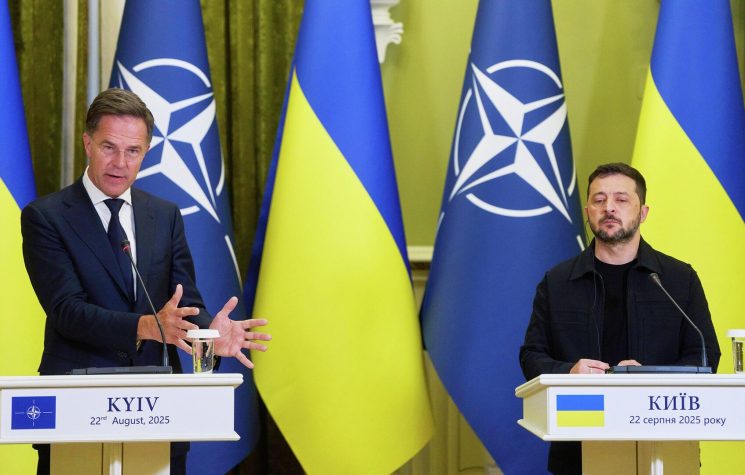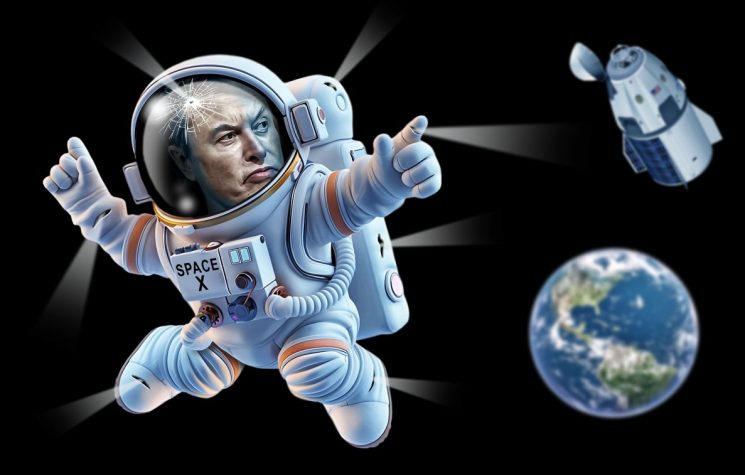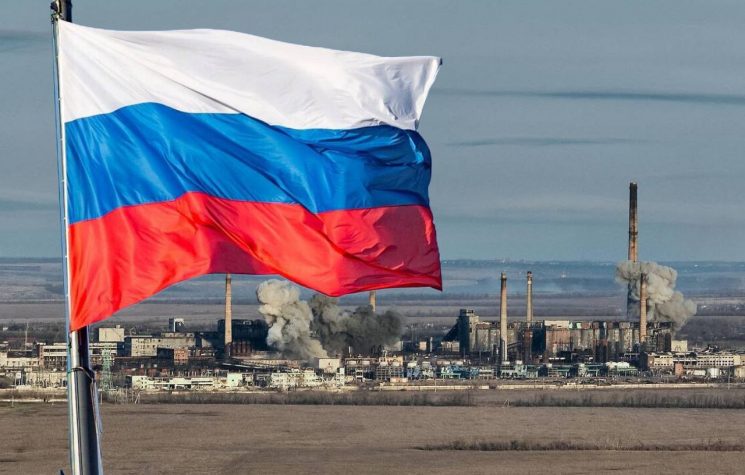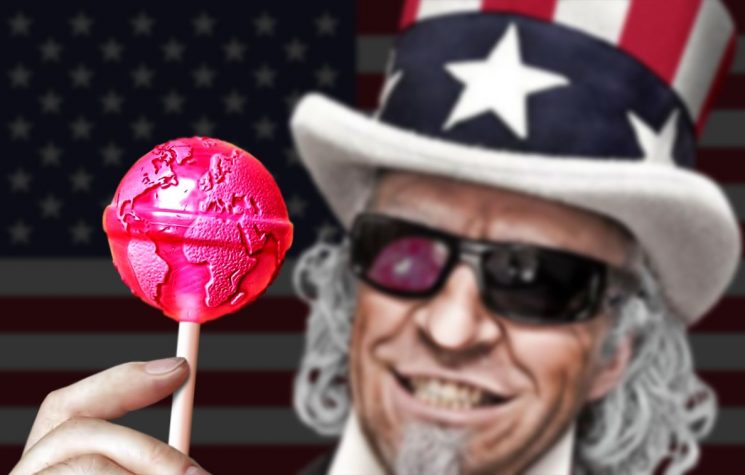The Trump administration’s policies have often seemed at odds with the president’s rhetoric.
Contact us: info@strategic-culture.su
President-elect Trump bragged during his election campaign that he could solve the Ukraine conflict in 24 hours once he is installed in the White House. Trump’s bombast is, of course, unrealistic. No war can be solved within 24 hours. There must be peace talks and, above all, a treaty to secure territory and people.
And what about the thorny issue of Ukraine joining NATO? For Russia to make a durable peace, that issue must be erased. Will Trump stop Ukraine from joining NATO?
For Ukraine to join NATO, the U.S. Senate must approve its membership, as must the other 31 NATO member states. Russia is adamant that Ukraine will not be permitted to join the U.S.-led military bloc. But let’s just consider how the U.S. and its NATO allies might procedurally attempt Ukraine’s membership.
Trump’s “America First” policy will have consequences for NATO. At this point, it is unclear whether a new Republican-dominated Congress will even vote on Ukraine’s admission to NATO.
With the recent U.S. elections, the American people have chosen to change course, but will a change of course be allowed by the powers that be? Does it matter which party, Democrats or Republicans, are in Congress and governing America? Will the war hawks win again, perhaps?
Trump is not in the White House yet. That won’t be until January 20, and there could be surprises from the outgoing Biden administration during the next two months.
President Biden could push the process of admitting Ukraine to NATO, and the current Congress or a future Congress could vote on it even after he is no longer in office. The U.S. Senate could also vote on a treaty to approve Ukraine’s membership in NATO as early as the next few weeks, although it could take years for the country to become a full member. Both Democrats and some Republicans hope that this solution would still allow Ukraine to join NATO. Many people forget in the “heat of the election show” that we’ve seen in recent weeks and the election hype around Donald Trump that both Democrats and Republicans support the proxy war against Russia and would like to see Ukraine join NATO.
It was recently revealed that primarily Republicans in the House of Representatives — who chair the national security committees — have formally filed a request pressuring President Biden to lift remaining restrictions on Ukraine’s use of U.S.-supplied Army Tactical Missile Systems (ATACMS) long-range missiles.
Although Trump’s son, Donald Jr, recently said that there is no place for “war hawks” in the new government, there will probably be pro-Ukraine figures in cabinet positions. This includes Senator Lindsey Graham, a prominent member of the GOP and a big Trump supporter, who might be given a ministerial post.
Graham candidly told CNN and CNBC that the Donbass is full of mineral resources that America wants its hands on and that access to such natural wealth was central to the conflict.
The hawkish senator has also said, and make no mistake, he is a close political friend of Trump and will have a lot of influence in the next administration, that “Trump will give Ukraine a lot of leverage to end the war.”
So, are Americans being fooled again? Thinking now that Trump is elected, the proxy war against Russia will be over quickly, only for the American warmongers to start another war, say, against Iran.
Still, ending the conflict in Ukraine will not happen easily or quickly. Trump can certainly destroy agreements, as he did during his first presidency with the Iran nuclear treaty, but how about making deals? In particular, constructing a security treaty involving nuclear-powered Russia, an unwieldy NATO alliance, and a corrupt fascist Kiev regime.
There are intractable problems. First, there was the Bucharest Summit in 2008 where all NATO members agreed that Ukraine would join the bloc. They also agreed that Ukraine’s next step on the path to membership would be the Membership Action Plan (MAP), NATO’s program of political, economic, defense, resources, security, and legal reforms for aspiring countries.
Secondly, in the recent “Washington Summit” in 2024, building on the decisions taken at the Madrid Summit in 2022 and the Vilnius Summit in 2023, the NATO allies reaffirmed that Ukraine’s future lies in NATO and that they will continue to support the country on its irreversible path to full Euro-Atlantic integration, including NATO membership.
Can Trump just stop this heavily invested process? In theory, yes, but then the other 31 states will protest vigorously, especially the Russophobic Eastern European states, and a declaration of nullity of these agreements must have unanimous consent.
In reality, it’s unlikely that Trump will simply leave NATO, according to interviews with former Trump national security officials and defense experts who are likely to serve in a second Trump term.
But even if he does formally leave the organization, NATO members have been building up troops in Poland, Latvia, Lithuania and Romania for months, if not years. Recently, many ships carrying American military equipment have arrived in the NATO transit country of the Netherlands.
Then we have another scenario: the new Secretary-General of NATO, the Dutch ex-Prime Minister Mark Rutte, is a diehard war hawk who, as I often emphasize, was radicalized by the MH17 disaster, which Russia was baselessly blamed for. Rutte says that with or without Trump, NATO is well prepared for the threat allegedly posed by Russia. Also, Rutte wants to discuss with President-elect Donald Trump a joint response to the alleged mounting threat from Russia, China, Iran, and North Korea.
Rutte is seeking to ingratiate himself with Donald Trump by praising his attempts to force NATO countries to spend more on defense beyond the current 2 percent of GDP target.
For Trump, it seems, the priority enemies are Iran and China. Mark Rutte, with his easy talk and persuasive skills, could convince Trump that Russia and North Korea are the worst threats, and North Korea has long-range nuclear missiles that can also hit America. Rutte claims Russia is supplying the technology to help North Korea target the U.S.
Are we seeing a rebirth of European sovereignty here? Perhaps the Trump administration is the trigger for Europe to continue as an independent bloc. With the danger of radicalization in the former Warsaw Pact countries such as the Baltic States, Czech Republic, and Poland, all seem hellbent on hostility toward Russia.
It has long been assumed that NATO cannot exist without America, but is that true? The budget for military spending has increased dramatically in recent years, partly from stolen Russian assets for weapons in Ukraine. The new way of waging war is focused on drones and Artificial Intelligence (AI), so the personnel that NATO countries lack is not a constraining factor.
Another issue is the lifting of sanctions on Russia. The sanctions were imposed under Trump’s first administration (2016-2020), which saw the most sanctions on Russia in America’s postwar history. The Trump administration’s policies have often seemed at odds with the president’s rhetoric. The arms shipments to Ukraine also began under his first administration: in 2017, the U.S. shipped lethal anti-tank weapons to Ukraine to help it fight separatists backed by Russia.
Trump did not roll back the Magnitsky Act either. Europe faithfully followed everything the U.S. did and also imposed sanctions and supplied “weapons for peace” to Ukraine.
Will Trump roll back all this? I do not think so. Trump was elected foremost to implement “America First,” and that costs money, a lot of money. The goal of the new Trump administration is to freeze the war and create a buffer zone with American and British soldiers in the style of North and South Korea. Something the Russian government will not accept, I think.
Russian President Vladimir Putin has already said that he would not agree to this. In my opinion, Trump will not pull out of NATO, and hostilities might continue.


















































